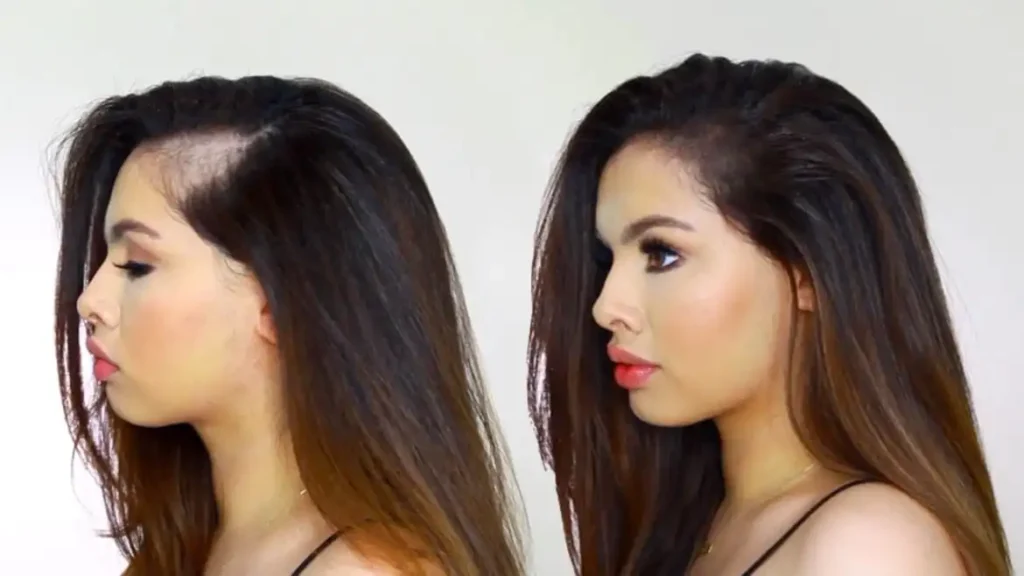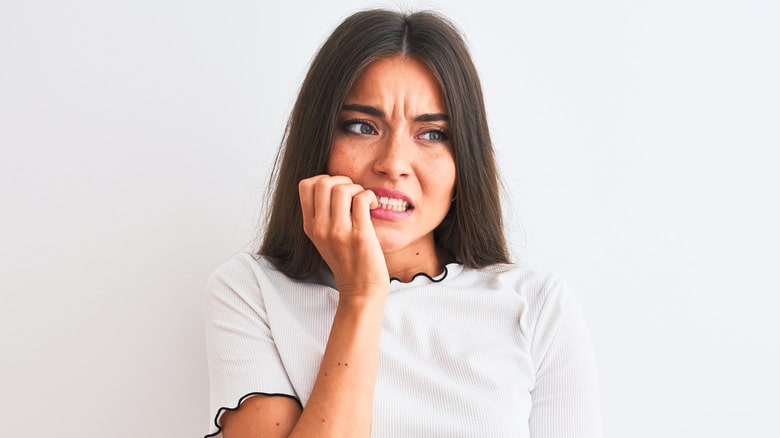I recall the moment I first observed my postpartum hair loss. It happened when I was two and a half months into being a new mother, recuperating from both a C-section and an emergency appendectomy. Exhausted from lack of sleep and longing for some relaxation, I opted to pamper myself with a facial. While pulling back my hair — which was still thick and lustrous from pregnancy — into a bun, I was taken aback by the significant recession of my hairline.
Believing I might be suffering from a delusion induced by insomnia, I grabbed my camera and snapped a picture. This action not only validated my concerns but also uncovered further thinning, along with numerous small hairs sticking straight out from my scalp. I shared the photo on Instagram and began receiving messages from numerous other women who had also experienced hair loss after childbirth.
Postpartum hair loss, which involves losing significantly more hair than the usual 100 hairs per day, is highly prevalent. A study examining postpartum hair loss discovered that 68.4% of participants experienced it to some extent. However, realizing that this was happening to me — and that it could persist for months — left me feeling disheartened.
According to Aaron Chen, DO, a board-certified dermatologist at Skincare by Amy Peterson Clinic in Miami Beach, “For many women, hair is a significant part of their identity. Losing it can deeply impact self-esteem, particularly for new mothers who are undergoing significant hormonal changes, coping with sleep deprivation, and recovering from childbirth.”
So, what exactly is postpartum hair loss, and is there anything that can be done to address it? Below, six experts offer their top recommendations.
What causes postpartum hair loss?

Dr. Chen explains that comprehending postpartum hair loss, also known as telogen effluvium, begins with understanding the hair’s life cycle. The normal, healthy growth of hair occurs in four stages: Growth (anagen), transition (catagen), resting (telogen), and shedding (exogen). “During pregnancy, this cycle can be temporarily disrupted due to increased levels of estrogen and progesterone — hormones that prolong the resting phase of hair,” Dr. Chen states. This is why many women observe thicker, fuller hair in the final trimester of pregnancy.
Following childbirth, these hormone levels decline rapidly, leading to a significant shedding of hair due to factors such as the stress of childbirth, deficiencies in nutrition, and even postpartum depression, Dr. Chen elaborates. This rapid shedding results in thinner hair.
When does postpartum hair loss start?

Experts suggest that postpartum hair shedding typically commences around two to three months after childbirth, reaching its peak around the fifth month and subsiding by the sixth month. Marisa Garshick, MD, a board-certified dermatologist based in New York City, emphasizes that each individual’s experience may vary, and some individuals might endure shedding for a longer duration. “Consulting a dermatologist can be beneficial, as they can assess if any additional factors are influencing the shedding,” she advises. Garshick further notes that “blood tests can be conducted to investigate other medical conditions, nutritional deficiencies, thyroid disorders, and hormonal imbalances that might contribute to hair loss.”
What does postpartum hair loss look like?

Similar to pregnancy, the extent of postpartum hair loss can vary from individual to individual. Elaine F. Kung, MD, a board-certified dermatologist and the founder of Future Bright Dermatology, explains that while it’s typical for individuals who have recently given birth to notice a receding hairline, particularly around the temples, there’s no universal answer to predict how one’s hair will respond to the sudden decrease in estrogen.
Dr. Garshick adds that postpartum hair may undergo changes, such as increased dryness or oiliness, and alterations in texture. However, reassuringly, all the experts consulted for this article confirmed that most women will experience a return to their normal hair thickness by their child’s first birthday.
How do you know if you will have postpartum hair loss?
Although it’s difficult to determine with certainty whether you’ll experience excessive hair loss after childbirth, experts suggest certain factors that could elevate your risk. “A family history of post-pregnancy hair loss, a challenging pregnancy, giving birth to twins or multiples, or having underlying medical conditions such as thyroid disorders, anemia, polycystic ovarian syndrome, or autoimmune disorders may all heighten the risk of postpartum hair loss,” explains Dr. Kung.
Despite the numerous appointments and tests during pregnancy, monitoring or predicting hair loss isn’t typically a focus for obstetricians. “We don’t conduct labs to anticipate hair loss, so it’s advisable to consult a board-certified dermatologist for a thorough evaluation,” advises Dr. Chen.
How do you treat postpartum hair loss?

Unfortunately, there are no targeted products to remedy postpartum hair loss, but experts concur that there are various proactive measures patients can take to tackle the issue. Here are their recommendations.
Pay attention to your scalp
Lucky Sekhon, MD, a board-certified reproductive endocrinologist, infertility specialist, and ob-gyn at the fertility center RMA of New York, emphasizes the importance of regular scalp cleansing. Dr. Garshick supports this, noting that neglecting scalp cleansing “can result in buildup on the scalp and contribute to seborrheic dermatitis, leading to redness and inflammation.”
Devin Toth, a hairstylist at Salon SCK in New York City, recommends incorporating scalp massages into your routine, which Dr. Garshick states can offer various benefits. “Scalp massages can improve circulation, eliminate dead skin buildup and excess oil, and aid in the absorption of certain products like scalp serums, oils, foams, and shampoos.
“Circulation to the scalp is crucial for promoting hair growth since the hair follicles rely on nutrients from the blood, thus maintaining them in their growth phase,” she adds. Regarding the technique for scalp massage, experts advise using a gentle touch: “Whether using your fingers, a handheld scalp massager, or a scalp exfoliator, it’s important to be delicate,” says Toth. “You want to avoid accidentally pulling out any existing hairs.”
If opting for a handheld tool, Dr. Garshick recommends the Hairstory Scalp Massager. “It’s user-friendly, and the silicone bristles are gentle on the scalp,” she notes.
Style with care

To minimize the effects of postpartum hair loss, Toth advises new mothers to handle their hair with extra care. He suggests steering clear of thermal styling tools and harsh brushing. Additionally, he recommends opting for hairstyles that allow for loose styling, such as a low ponytail or a low braid. “Both of these options are ideal because they keep your long hair away from your baby’s grasping fingers, which often unintentionally pull out a new mother’s hair,” he explains.
Toth suggests using scrunchies to secure these hairstyles. “Scrunchies are less likely to accidentally tug on your hair compared to elastic bands or hair bungees,” he points out. Slip Hair Scrunchies, made of silk, are designed to minimize tension on the hair.
Eat a balanced diet
After giving birth, finding the time to prepare nutritious meals for yourself may feel overwhelming, but it’s crucial for your well-being, advises Dr. Kung. She suggests that new mothers concerned about postpartum hair loss opt for a balanced diet abundant in protein, iron, zinc, vitamin A, biotin, and vitamin C. Dr. Kung also mentions that omega-3 fatty acids, vitamin D, and vitamin E could be beneficial, although further research is necessary to determine their specific impact on hair growth.
Skip chemical hair treatments
While it might be tempting to schedule a visit to your colorist for a post-baby makeover, experts recommend refraining from hair-related procedures during this time. According to board-certified dermatologist Geeta Yadav, MD, opting for such treatments could significantly increase the risk of hair breakage. Dr. Sekhon advises new mothers to steer clear of chemical hair treatments like perms, relaxers, and excessive coloring altogether during the postpartum phase. She emphasizes that these procedures could weaken the hair’s structure, making it more prone to damage and breakage.
Consider getting a new haircut

We’re cautious about suggesting a haircut while dealing with sleep deprivation and hormonal changes, but there are valid reasons to contemplate a new hairstyle, explains Toth. For those with curly or coiled hair, he recommends layering to enhance and showcase the natural texture. According to him, leaving curls at a single length might make them appear thin, whereas layering adds volume and vitality.
For individuals with fine, straight hair, Toth suggests opting for a one-length cut such as a blunt bob or lob. For added flair, he suggests incorporating a disconnected fringe. The style of fringe—whether blunt, curtain, or side-swept—can be chosen based on what flatters your facial features and conceals any sparse areas along the hairline.
Find ways to unwind
Although it may feel like an unattainable task for new parents to prioritize self-care, it’s crucial to care for yourself with kindness, beyond solely focusing on maintaining your hair. Dr. Chen advocates for stress management by scheduling moments for relaxation, meditation, and physical activity. Additionally, if feasible, he recommends indulging in a spa day as a beneficial option.
Discover more trends:
- Middle-aged Women’s Irregular Sleep Tied to Heart Problems
- Causes, Symptoms, and Treatment of Femoral Hernia
- Understanding Arthritis Pain: A Comprehensive Guide
- Be Mindful of Early Indicators of Rheumatoid Arthritis
- Follow us on Facebook





